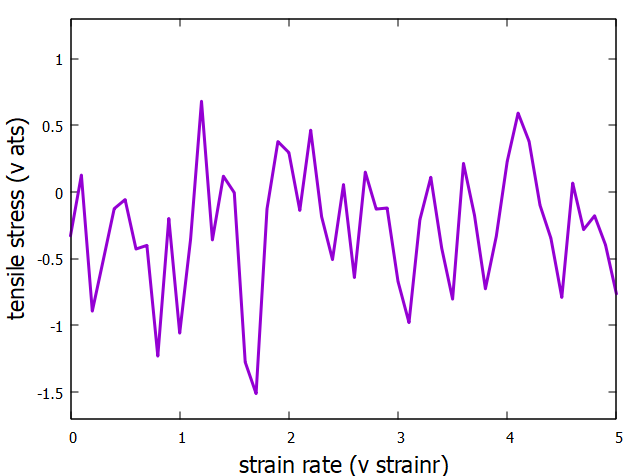Dear LAMMPS users,
I am subjecting a polymer melt system (Kremer Grest model) to uniaxial elongation shear using fix deform erate along with NVT/SLLOD. My objective is to calulate the tensile stress as a function of strain rate. I am attaching a small portion of the script here for reference.
units lj
boundary p p p
pair_style lj/smooth/linear 2.5
bond_style fene
special_bonds fene
pair_coeff 1 1 1.0 1.0 2.5
pair_modify shift yes
bond_coeff 1 30.00 1.50 1.0 1.0
variable lxs equal 16.47772811 ## The initial box length
fix f1 all nvt/sllod temp 1.0 1.0 0.1
fix 2 all deform 1 x erate 0.0327 y volume z volume remap v units box
compute press all pressure f1_temp
variable lx equal lx
variable strainr equal “(v_lx - v_lxs)/v_lxs”
variable press1 equal -c_press[1]
variable isopressure equal “(-c_press[1] + -c_press[2] + -c_press[3])/3” ## Trace of the stress tensor
variable ats equal “3*(v_press1 + v_isopressure)/2” ## Poisson’s ratio is 1.5
fix 6 all ave/time 62500 1 62500 v_ats v_strainr file response.txt
timestep 0.001
thermo_style custom step temp press pe ke etotal v_strainr v_ats v_lx
thermo_modify flush yes temp f1_temp
I am attaching the response.txt and the plot for easy reference.
The issue: The response file doesn’t show the expected v_ats vs. v_strainr relationship, the v_ats should increase as v_strainr increases. I go upto strain rate of 5 box length, and yet the v_ats (stress) fluctates around zero. Any suggestions are highly appreciated. Thanks for your time.
LAMMPS version: 29 Sep 2021 - Update 3
response.txt (1.2 KB)
